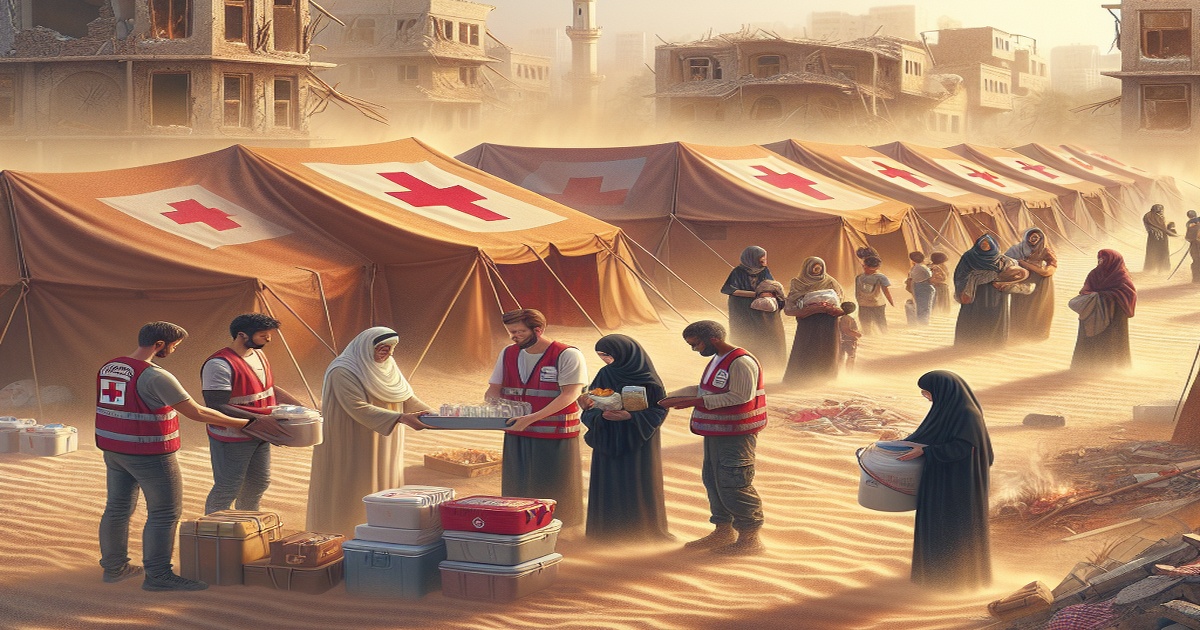The United Kingdom is preparing to join Jordan and the United Arab Emirates in airdropping aid into Gaza, where starvation and malnutrition have become critical issues. This action follows growing international pressure. Israel has also announced temporary "humanitarian pauses" to allow for increased aid delivery to the starving population.
The World Health Organisation has expressed concern over the dangerous rise in malnutrition within the Gaza Strip, noting a significant number of deaths. The UN's Palestinian refugee agency (UNRWA) reports that a substantial portion of young children in Gaza City are acutely malnourished.
Airdropping aid is a debated method of delivering assistance. Humanitarian organizations have raised concerns about its safety and effectiveness. Médecins Sans Frontières (MSF) has described it as "humanitarian theatre," suggesting it is not the only solution. The International Committee of the Red Cross (ICRC) views airdrops as a last resort due to the challenges they present.
Airdrops are typically used when it is difficult to deliver aid through other means. This involves dropping supplies from an aircraft into a designated area. The process requires a clear location, free of obstacles and people, and subsequent distribution of the aid on the ground.
The ICRC emphasizes that the most efficient approach involves experienced international organizations. The ICRC is not currently involved in the airdrops, prioritizing the safety of those receiving aid. They assess needs and respond directly, avoiding actions that could put people at risk.
In the densely populated Gaza Strip, airdropping presents the challenge of distributing aid without causing harm. Concerns include the inability to precisely target aid packages, potentially leading to injuries or fatalities. There have been reports of deaths related to aid drops in the past.
The desperation of the population can also create dangerous situations as people compete for the aid. Criminal groups have also been known to exploit aid distribution, and airdrops offer no control over this issue.
Airdrops are considered a less efficient method of aid delivery compared to land transportation. They are expensive due to the costs associated with aircraft operation and can deliver limited amounts of supplies. MSF advocates for allowing more aid to enter Gaza through land routes.
The preferred method of aid distribution is organized, large-scale distribution that meets everyone's needs. Land transportation, using trucks operated by humanitarian organizations, is considered more effective. It allows for the delivery of larger quantities of supplies in a more efficient manner. The World Food Programme has stated it has enough food to feed the entire population for a significant period. The ICRC emphasizes the importance of dignified access to aid, delivered through land transportation by organizations with experience and the trust of the communities in Gaza.







5 Comments
Africa
So many people on the ground have made it clear this is not the solution. Is this the right answer?
Coccinella
I would be worried that children may find these packages and not know what they are. It is not safe.
Comandante
MSF is right. 'Humanitarian theatre' is a perfect description. Focus on opening land routes!
Bella Ciao
Even if it's not perfect, it's something. Every meal counts and should be supported!
Muchacha
Every bit of food and help counts. I support any effort to get aid to starving people. This is important.